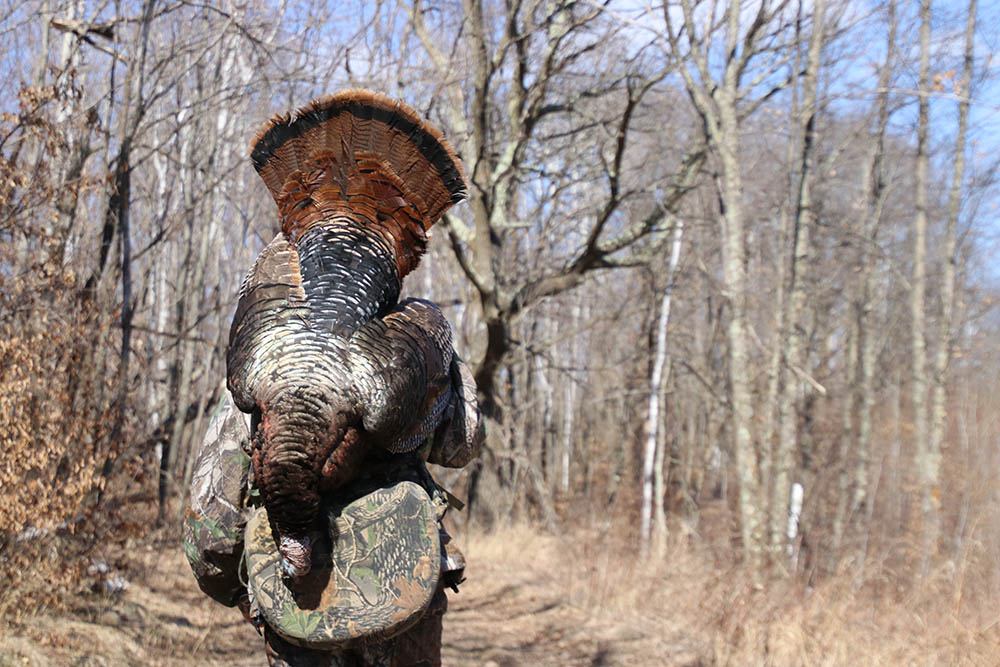There are few scenarios more frustrating for a turkey hunter than trying to pull a dominant
gobbler away from his harem of hens.
You’ve done your homework and have found the roost, but all your time scouting seems useless after failed attempts to get the dominant tom into range. Your seductive clucks and purrs are no match for the swooning longbeard—and can you blame him?
That boss tom knows he’s got a good thing going with his group of females and doesn’t see a need to leave. Sure, some jakes may have given your spread a look, but after laying your eyes on the king of the roost, he’s all you can think about.
It’s not easy—but getting a mature tom away from a group of hens and into your spread can be done. In order to do this, one has to first think like your adversary. Achieving flock dominance is no simple task for a turkey, and no doubt this old boy has fought his way to the top. He’s living comfortably now, enjoying the fruits of his labor.
Heck, it’s almost like he knows you’re there, as you are leaned up against that old oak tree, 250 yards away, watching him pirouette around five different hens. Or was it six? No matter, his day of reckoning will come soon enough.
One of the best ways to get a love-struck gobbler within striking distance is by giving him some competition. Spring turkeys are extremely territorial and are well aware when an unfamiliar face shows up. Utilizing a full-strut tom decoy, like the King Strutter from Flambeau Outdoors, is one of the best ways to get a mature bird to make his last mistake. The King Strutter will give you a boss-tom presentation and realism that gives results.
Location is everything for this gameplan to work out. A few springs back, I was hunting in northeast Nebraska when I encountered an almost identical situation mentioned above. I had “put to bed” a group of birds that were headed to roost in a large row of oaks the evening before.
The roost butted up to a sizable field where the birds had been milling about that afternoon, so I figured my best bet was to set up on the opposite corner of the field, which gave me enough distance to not spook the birds in the morning.
I arrived early the next morning, fully expecting to be tagged out before breakfast. On paper, my plan seemed perfect. The birds would get down from the roost, and the boss tom, that I had seen the night before, would lock eyes on my full strut decoy and come charging.
As the sun began to peek over the horizon, I quickly realized my “perfect” spot had some serious flaws. The corner of the field where I set up was slightly lower in elevation than the rest of the field, and this unfortunate event put my decoy spread out of sight for the birds across the way.

I had no choice but to sit tight and hope that I could pull the birds close enough to at least get a view of my decoy spread. My clucks and yelps were no match for the group of hens mingling with the gobbler I had spotted the night before. As the morning progressed, I heard the group move farther and farther away, eventually slipping deep into the woods.
I made a move to higher ground closer to the roost, where I knew that the birds would be able to see my full strutter plain as day from a distance.
Sure enough, later that afternoon, the gobbler I had been after came to back to the field with his group of hens. This time he caught glimpse of my full strut decoy. He left his companions with no hesitation, storming towards me with tenacity. He presented a perfect shot at 25 yards, and with that one simple move to higher ground, I was able to tag out.
It certainly doesn’t always work out like that, but under the right circumstances a full strut decoy can lure that wily old gobbler into range.